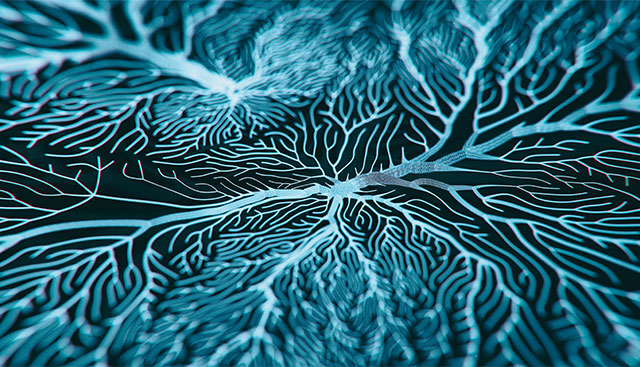
Innovative 3D Visualization Technology Enhances Brain Cancer Treatment
Dr. David Pearse remembers when his first symptoms appeared. He was working at his computer and got confused; he had difficulty recognizing words.
Assuming he was having a stroke, he immediately went to the emergency room. Soon, he learned the results. Dr. Pearse, a radiologist, had looked at images like the one of his brain for nearly 40 years and immediately knew his own diagnosis - glioblastoma, the most aggressive form of cancer in the brain.
"I'm a doctor, so I started a plan," he said.
Through colleagues, Dr. Pearse had heard of Dr. Michael Vogelbaum, Moffitt’s Chief of Neurosurgery and Program Leader of Neuro-Oncology.
Dr. Vogelbaum was using a new 3D visualization technology. A novel 3D surgical exoscope called the Orbeye is used with a dye called 5-Aminolevulinic Acid, or 5-ALA. Viewed through the scope under blue light, the dye makes cancer cells shine a fluorescent red.
This innovative technology meant that Vogelbaum could more easily see where Pearse’s tumor lived and where the healthy brain tissue began. That advantage meant Dr. Vogelbaum could remove the tumor growing in Dr. Pearse’s brain without affecting normally functioning areas.
Two weeks after Dr. Pearse’s diagnosis, he was scheduled for surgery with Dr. Vogelbaum. The surgery was a success and the tumor was successfully removed.
"We are the only center in North America equipped with a 3D exoscope that can be used with 5-ALA, and this unique technology gives us a view unlike any other," Dr. Vogelbaum said, adding that Moffitt is conducting a validation study with the equipment. "This type of microscope uses a digital camera like those used for high definition broadcasting of sporting events. It’s highly light sensitive and that allows us to see both normal brain tissue and fluorescing tumor in real time."
Although Dr. Pearse had come a long way in a short time, glioblastomas are never truly gone.
"In a glioblastoma you have two parts to the disease," Dr. Vogelbaum said. "There is the solid part which lights up with contrast and that’s what we typically remove. Then there is the infiltrating part that co-exists with normal, functioning brain tissue. There is no safe way to remove all of that part of the disease while keeping the brain intact."
While the 5-ALA and Orbeye technology wasn’t a cure, it was a way to improve Dr. Pearse's quality of life. And for that, he is grateful.
To refer a patient to a specialist in our Neuro-Oncology Program, complete our online form or contact a physician liaison for assistance or support. As part of our efforts to shorten referral times as much as possible, online referrals are typically responded to within 24 – 48 hours.
